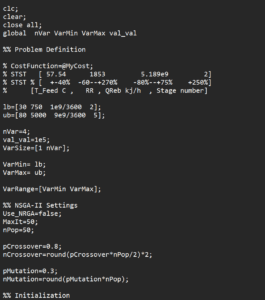Introduction
Located in the FALAR district of CHARMAHAL and BAKHTIARI province, 55 kilometers from LORDEGAN city, LORDEGAN Pet. Co. Complex was established in 2008. Benefiting from abundant water and gas resources, proximity to three national gas pipelines, and a suitable site for leveling and infrastructure development, the complex enjoys a prime location.
The company produces ammonia with a daily capacity of 2050 tons and urea with a daily capacity of 3250 tons. Through research and development, the company has a bright outlook for meeting domestic demand and exporting high-quality products globally, positioning itself at the forefront of technology. Currently, the company is a subsidiary of the Iranian Petrochemical Investment Company and ultimately belongs to the Persian Gulf Petrochemical Industries Company.
LORDEGAN Pet. Co. is classified as a urea-producing petrochemical complex. Due to the presence of three national gas pipelines in the CHARMAHAL and BAKHTIARI province, the complex faces no significant feedstock supply issues, except during winter. The annual capacity of this petrochemical complex is 1,075,000 tons of urea and 670,000 tons of ammonia.
Ammonia
Ammonia is one of the most important hydrogen compounds of nitrogen, consisting of nitrogen and hydrogen. It exists in both gaseous and liquid forms. Lighter than air, colorless, and highly pungent, ammonia causes irritation and even damage to the respiratory tract upon contact. Liquid ammonia is colorless and causes severe burns on contact with the skin. Ammonia is highly flammable, toxic, and corrosive, making its transportation and storage challenging. Therefore, most of the produced ammonia is converted into urea.
Process Description
This research aimed to optimize one of the distillation units in LORDEGAN Pet. Co. Complex. By utilizing a simulator, the objective was to increase the production of overhead products. Subsequently, the optimization results were implemented in the actual unit using Aspen HYSYS and MATLAB simulations. The results demonstrated that changes in operational conditions increased the quantity of high-quality overhead products. Ultimately, a net economic balance between the increased production of overhead products and energy consumption indicated energy savings for the refinery.



Conclusion
Using simulation and economic analysis methods, it is possible to achieve optimal solutions to reduce operational costs and increase production efficiency. To better understand the behavior of the system and to evaluate the effectiveness of various changes, it will be very useful to simulate the process using specialized software such as Hysys. By performing a detailed economic analysis, it is possible to estimate the various costs associated with the process and choose the best option for optimization.
In order to improve the performance and productivity of LORDEGAN Pet. Co. Ammonia Production Unit, Anil Pars Company conducted comprehensive simulation and optimization studies on the key equipment and processes of this unit. These studies include the following:
Simulation and optimization of tower T-3802 (ammonia separation) of LORDEGAN Pet. Co.
Simulation of LORDEGAN Pet. Co. ammonia separation and recovery unit under Casale license
Optimizing and reducing the costs of the distillation tower for the separation of ammonia and water (LORDEGAN Pet. Co.)
Optimizing and Reducing the Costs of the Distillation Tower for the Separation of Ammonia and Water (LORDEGAN Pet. Co.)
In this project, the process of optimizing and reducing the costs of the distillation tower for separating ammonia and water (LORDEGAN Pet. Co.) has been simulated with Aspen Hysys version 14 software and coded in MATLAB software.


